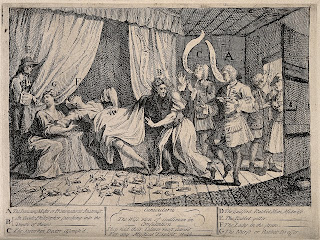In 1859, a war was sparked by a pig.
A border confrontation between USA and Britain over the Canada-US border, the 'Pig War' or 'Pig and Potato War' incurred no human casualties. The dispute was a result of ambiguity in the terms of the Oregon Treaty of 1846, which led to USA and Britain both claiming sovereignty over the San Juan Islands. The war was sparked when an American farmer, upset to find a large black pig rooting through his garden, shot the pig. The pig belonged to an Irishman, Griffin, employed by the British Hudson's Bay Company. Cutlar offered $10 compensation to Griffin, but Griffin instead demanded $100. Cutlar refused, believing he should not have to pay for the pig that trespassed upon his land, British authorities threatened to arrest Cutlar. Subsequently, American military got involved, dispatching 66 soldiers of the 9th infantry, which Britain responded to by sending 3 warships. Military presence escalated further on both sides (yet still no blood was shed) until politicians of each nation negotiated to reduce their military presences. Strangely, these two opposing military units on the island had a friendly social life, often celebrating their national holidays together.
It was not until 1872 that Britain withdrew their forces, and not until 1874 that USA withdrew theirs, making the Pig War last over triple the length of time of the US Civil War (1861-1865), despite starting out as a small argument between two residents of the island.
The Eiffel Tower was only supposed to be up for 7 years, and they nearly had a giant replica of a guillotine instead
In 1889, a World's Fair was to be held in Paris, to celebrate the 100-year anniversary of the French Revolution, and, more significantly, the national success France had enjoyed as a result of their revolution - still a hugely significant event within French politics and society at that time. A competition was held to design the monument that was to be placed on the Champs de Mars for 7 years. Of course, that ended up being the Eiffel Tower, the most impressive piece of engineering ever to be produced at that time - making for serious bragging rights for the French nation. However, one design plan that almost won the competition was a giant replica of the guillotine. The guillotine was a symbol of the revolution as it became the standard mode of execution post-1789, for everyone of every class, making it a symbol of equality. But however appropriately it commemorated the values of 1789, it is certain that a giant guillotine in the middle of France wouldn't have become quite the beauty spot that the Eiffel Tower is today.
 In 1726, a working-class woman tricked a bunch of educated medical professionals into believing she'd given birth to rabbits
In 1726, a working-class woman tricked a bunch of educated medical professionals into believing she'd given birth to rabbitsDo be warned, this tale is a little gruesome! Mary Toft, a woman from Godalming in Surrey became the subject of national news in 1726 when she claimed to be giving birth to rabbits. Various well-renowned medical professionals visited her and confirmed in their reports that she was indeed giving birth to dead rabbit parts, and even the king sent his own doctors to investigate. Eventually, it was revealed to be a hoax and Toft was arrested (and later acquitted). The hoax was carried out as people close to Toft helped her to insert various cut-up pieces of rabbit into her. It is still not entirely clear to historians exactly who masterminded the hoax, but it's widely believed she was pressured into it by perhaps a family member. Whilst it's most likely the hoax was carried out for financial gain (which she very nearly received from the king), the case did have a huge lasting impact socially as the authority of men in the field of midwifery was hugely undermined by the whole affair.
I hope you enjoyed my attempt at something a little different on the blog, and would love to know your thoughts on whether I should do things like this more often! See you in the comments section :D
xoxo








No comments